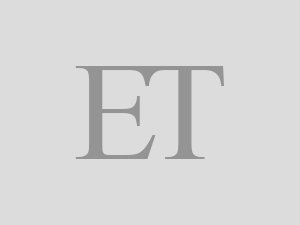 iStock
iStockThe March 2024 quarter ARPUs for the incumbent telecom operators varied between a low ₹146 for Vodafone Idea and ₹209 at the top end for Bharti Airtel. This means the current ARPUs are far from the required level and necessitate concerted efforts from telcos to improve return on investment.
In this backdrop, the latest increase in tariffs by Reliance Jio, Bharti Airtel and Vi (VIL) can be considered as a step in the right direction. But, whether the companies will be able to undertake another price increase and how soon isn't known yet. The latest increase was after a gap of over two-and-a-half years. Any adverse effect of such tariff revisions on the usage pattern of subscribers will be crucial in deciding the extent of improvement in the financial performance of telcos.

Following the increase in tariffs, the stock of Reliance Industries rose by 2.3% on Friday to close at ₹3,131.9. On the other hand, stocks of Bharti Airtel and VIL were under pressure, falling by 1.8% to ₹1,445.4 and by 3.4% to ₹17.9 in that order amid profit-booking after a recent surge in their prices.
Jio has raised prices by 12-25% across various prepaid plans, which will be in effect from July 3. The highest tariff increase is for the popular 1.5 GB per day plan while the lowest increase was for the higher 3 GB per day plan. It will also offer unlimited 5G data for plans above 2 GB per day, an incentive for users to upgrade to high-data usage plans.
For post-paid plans, tariff increase has been 13% for ₹449 per month-75 GB plan, and 17% in the case of ₹349 per month-30 GB plan. Since the prepaid 1GB per day and 1.5 GB per day plans attract a higher tariff increase of 19% and 25%, any major exodus of postpaid users to prepaid plans looks unlikely. In addition, Jio has left tariffs of plans meant for feature phone users unchanged.
After Jio, Bharti has increased tariffs by 10-21% from July 3 while Vi has increased rates by 10-23% from July 4. If the telcos can raise tariffs at regular intervals, it would help in improving cash flows, which can then be routed to improve the telecom infrastructure for better customer experience.
For instance, an effective 5G rollout would require investment in not only the 5G gear but also in a better infrastructure of 5G cell sites. Indus Towers, the country's largest mobile tower installation company, has been reporting strong tower and tenancy additions. It reported above 3% sequential increase in the number of towers in each of the four quarters of FY24.
For the March 2024 quarter, the number of towers increased by 3.8% sequentially and 13.9% year-on-year to nearly 220,000. In a recent report, BNP Paribas noted that Indus added nearly 27,000 towers in FY24 compared with 24,000 between FY21 and FY23. Any improvement in the cashflow of telcos will support this trend.
(Catch all the Business News, Breaking News, Budget 2024 Events and Latest News Updates on The Economic Times.)
Subscribe to The Economic Times Prime and read the ET ePaper online.
Read More News on
(Catch all the Business News, Breaking News, Budget 2024 Events and Latest News Updates on The Economic Times.)
Subscribe to The Economic Times Prime and read the ET ePaper online.









 Get Unlimited Access to The Economic Times
Get Unlimited Access to The Economic Times
